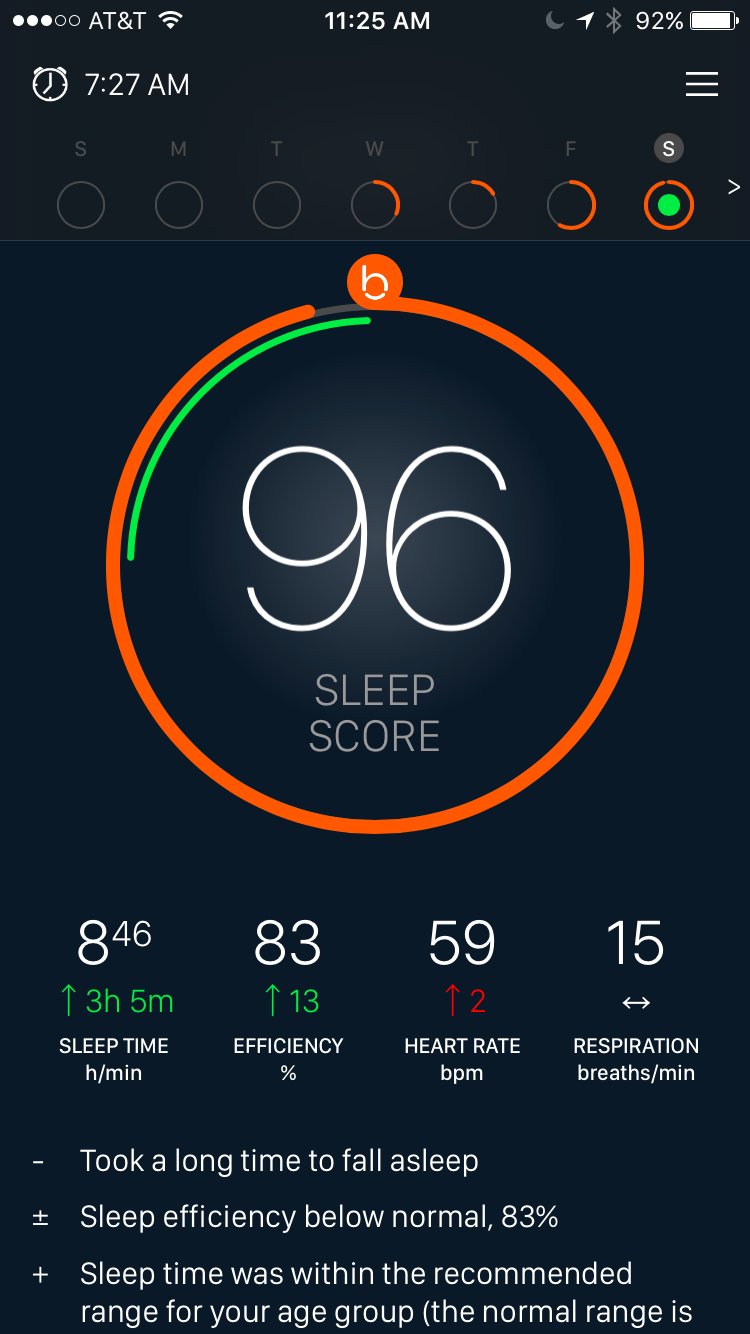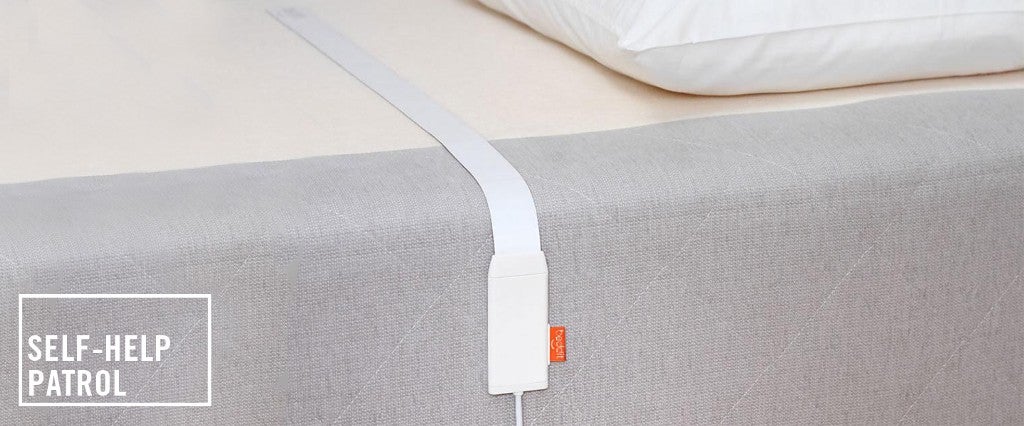Successfully sleeping is one of the hardest things to achieve: The harder you work at it, the less sleepy you tend to feel — and the more you’ll toss and turn.
This is why I’ve been somewhat puzzled by the rising trend of “sleep tracking” technology — devices that push data collected about a night’s rest to a phone app. It seems paradoxical that turning sleep into yet another activity that’s measured and subsequently analyzed could actually help me sleep. (In fact, I have taught myself to sleep better, in part, by learning not to worry so much about sleep.) I appreciate sleep’s status as a hiatus from the rest of a day spent conducting self-surveillance and tracking. While I’m resting, shouldn’t my phone rest too?
Despite all of that, over the past couple weeks, on seven different nights, I turned my phone into a nocturnal tracker, as the sleep tracker Beddit ($149) measured the quantity and quality of my sleep. By tracking my heart rate and breaths per minute through a motion sensor underneath my sheets that then Bluetoothed the data to my phone, the Beddit app turned the information into charts and assigned me a “Sleep Score.” The underlying technology is called “ballistocardiography”: “Each time the heart beats, the acceleration of blood generates a mechanical impulse that can be measured and analyzed,” writes Beddit, a startup based in Finland.
This is, of course, not the only system that’s attempting to bring the sophistication of a sleep lab to the average consumer. There’s Aura ($299.99), which hides sound and light sensors inside a bedside lamp (while a sub-mattress pad collects sleep quality data). Similarly, Sense ($129) uses a glowing bedside orb to measure environmental factors and a pillow-clip to measure movement. Other trackers are app-only—like Sleep Genius and Sleep Time—and rely on a smart phone’s accelerometer to measure movement throughout the bed — where your phone must be placed. Many wearable wristbands offer something similar — including ones you may already use to track your workouts.
Beddit’s main differentiator is discretion: Once you slip the sensor’s long, white tab under your sheets, you basically forget it’s there. Set it and forget it…
…Until the next morning. when the app’s alarm wakes you up, supposedly, at the exact time in your sleep cycle when your body should be waking up.
Goal
“Achieve more with a great night’s sleep with Beddit — the most convenient and clinically validated sleep tracker,” reads Beddit’s tagline. The idea is not simply to gather data, but to use that data to improve your sleep. Beddit argues that it’s “most convenient” because you don’t really see it and “clinically validated” because scientists have tried it out and published research about it (although it’s worth noting that all the papers listed on Beddit’s site are authored or co-authored by the company’s CTO).
Method
Put the Beddit sensor under your sheets and download the app. The device stays plugged in, so you have to have an outlet near your bed.
Before you go to bed, set the app’s alarm, and the measuring begins. For best results, you’re asked to sleep with your torso atop the tracker. (If you share a bed, make sure to ask your partner for a bit of space.)
Over the course of the night, Beddit measures sleep time, efficiency, heart rate (bpm) and respiration (breaths per minute). When you wake up and click “I’m up,” the app renders the data into a digestible format, along with a “SleepScore” — from 1 to 100.
Results
On the first night, terrible back pain kept me tossing and turning, and the next morning I was told I had a sleep score of 31—four hours at 59 percent efficiency. Fifty-nine percent is not a good thing, apparently, and Beddit tells me my sleep efficiency is “significantly below normal” (ouch!) that I “took a long time to fall asleep”; and that “sleeping less than 6 hours per night is not recommended.” In addition to feeling terribly rested, I feel slightly judged.
Beddit compensates for the harsh critique when you “achieve” more, however. On my fourth night using Beddit, I managed to sleep for more than eight hours, a huge improvement for me, and am told that my sleep time was within the “recommended range” for my age group. I can see the hours when I slept the deepest in its charts, as well as my heart rate dropping over the course of the night (which is a good thing). But at 83 percent, my sleep efficiency is still considered below normal.

Did it work?
Beddit’s data seems to be accurate — at least, their SleepScore was lower on nights when my sleep felt worse, and the number of hours logged was correct. (I’m not sure how to verify my rate of respiration or heartbeats per minute, so I’ll just take Beddit at its word.) But the experience is generally well designed; I was not anxious about falling asleep because of performance anxiety, even though I knew my SleepScore was likely to be poor, given the fact that I tend to go to bed late, wake up early and get out of bed at some point in the night.
Is this going to help my sleep get better?
I don’t think so. And this, for me, is my main issue with sleep trackers. I know that I’m not a great sleeper, but I also know that I don’t do lots of things the right way. I drink lots of coffee; I drink booze in the evenings; I don’t go to bed at the same time each day; I don’t have thick curtains to block out morning sunshine. These are all things about myself I could theoretically change, but visualizing the data resulting from these poor habits doesn’t particularly inspire me to do so.
Beddit attempts to provide tips on improving the various stats it gives you on its website, but when I looked up how I might improve my below-normal sleep efficiency, I encountered many of the same old tried-and-true tactics. Curious? All of the things I already know I don’t do.
Zak Stone edits the Self-Help Patrol. Pitch him on your new device, ancient theory or self-improvement strategy at zak@melindustries.com.
More Self-Help Patrol:
- Self-Help Patrol: The Deep Freeze of Cryotherapy
- Self-Help Patrol: The Road to Ultimate Happiness Is Paved in Garbage
- Self Help Patrol: Becoming Buddha in Ten Days

